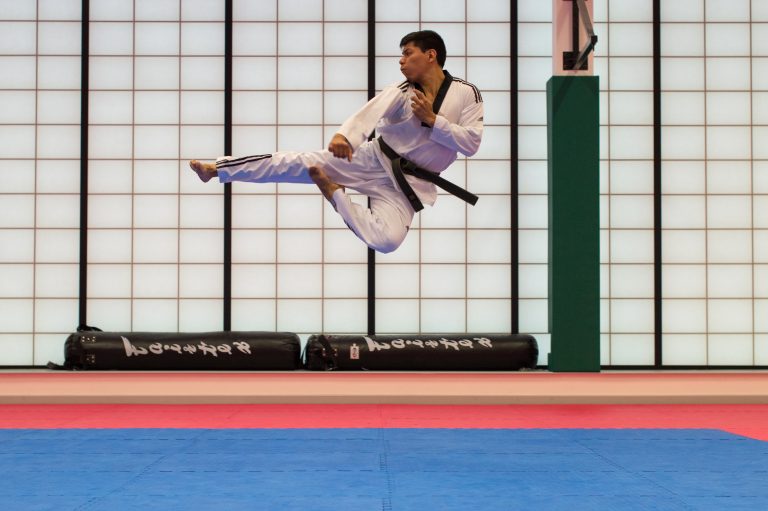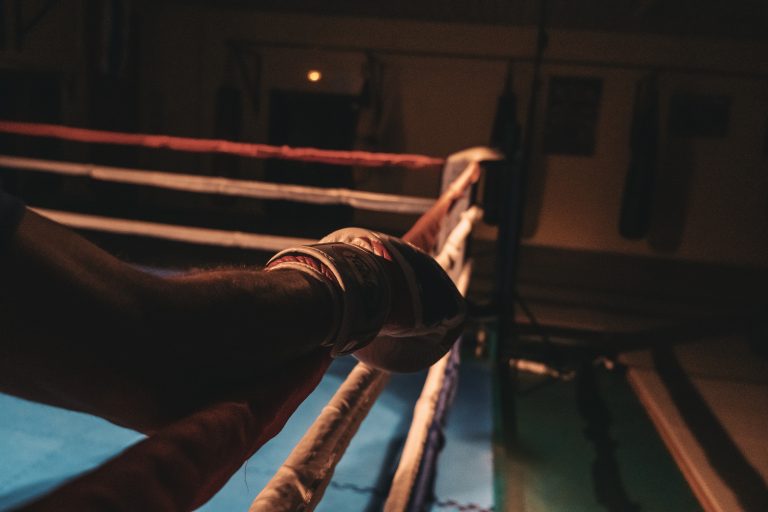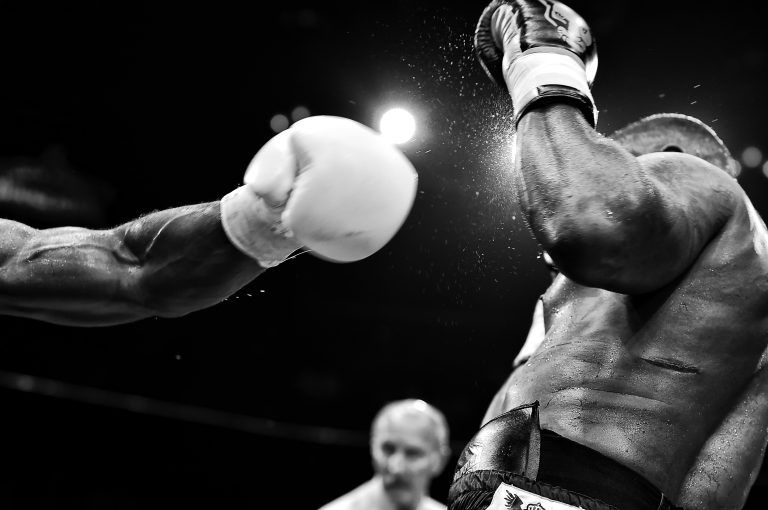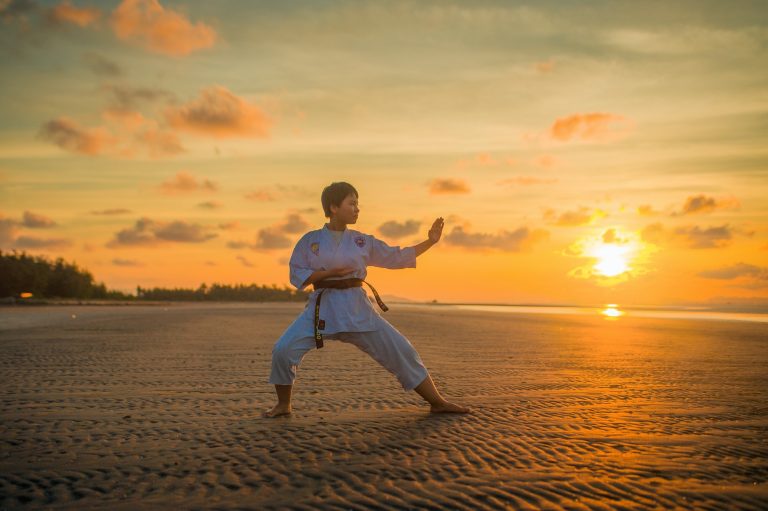The Shotokan Karate Belt Grading System: A Detailed Guide
Shotokan karate is one of the most popular martial arts disciplines in the world. This traditional Japanese martial art is known for its focus on strong basic techniques and powerful strikes. One of the distinguishing features of Shotokan is its belt grading system, which is used to measure a student’s progress and skill level. In this blog post, we will explore the Shotokan karate belt grading system in detail.
The Origins of the Shotokan Belt System
The Shotokan belt system was developed by Gichin Funakoshi, the founder of the Shotokan style. Funakoshi introduced the belt system to karate in the early 1900s as a way to measure a student’s progress and skill level. The belt system was modeled after the kyu/dan system used in Japanese board games, where kyu ranks represent novice skill levels, and dan ranks represent mastery levels.
The Shotokan Belt Ranks
The Shotokan belt grading system consists of ten kyu (student) ranks and ten dan (master) ranks. The kyu ranks are represented by colored belts, while the dan ranks are represented by black belts.
Kyu Ranks
The kyu ranks in Shotokan are as follows:
– White Belt (10th Kyu): The white belt is the starting rank in Shotokan karate, and it represents a beginner level.
– Yellow Belt (9th Kyu): The yellow belt is the second kyu rank in Shotokan karate. At this level, students learn basic techniques and stances.
– Orange Belt (8th Kyu): The orange belt represents a higher level of proficiency in basic techniques and stances.
– Green Belt (7th Kyu): At this level, students begin to learn basic sparring techniques and kata (formal exercises).
– Blue Belt (6th Kyu): The blue belt represents a higher level of proficiency in sparring techniques and kata.
– Purple Belt (5th Kyu): The purple belt is the last intermediate kyu rank. At this level, students learn more advanced techniques and kata.
– Brown Belt (4th Kyu – 1st Kyu): The brown belt is the last kyu rank before the dan (black belt) ranks. There are three levels of brown belt, each representing a higher level of proficiency.
Dan Ranks
The dan (black belt) ranks in Shotokan are as follows:
– 1st Dan: The first dan black belt is awarded to students who have demonstrated mastery of the basic techniques and kata in Shotokan karate.
– 2nd Dan: The second dan black belt represents a higher level of proficiency in Shotokan karate.
– 3rd Dan: The third dan black belt is awarded to students who have demonstrated exceptional proficiency in Shotokan karate.
– 4th Dan – 10th Dan: The fourth dan through tenth dan black belts represent the highest levels of proficiency in Shotokan karate.
The Belt Grading Process
In Shotokan karate, students earn their kyu belts by demonstrating proficiency in basic techniques, stances, sparring techniques, and kata. The grading process usually involves a formal test in front of a panel of instructors or senior students. Students must demonstrate a thorough knowledge of the techniques and kata required for their rank.
The grading process for dan (black belt) ranks is much more rigorous. Dan grading tests usually require students to demonstrate mastery of multiple kata, advanced techniques, and sparring proficiency. Dan grading tests may be several hours long and are often physically demanding.
The Importance of the Shotokan Belt System
The Shotokan belt grading system is an important tool for measuring a student’s progress and skill level. The belt system provides a clear path for students to follow as they progress through the ranks, and it helps instructors gauge each student’s strengths and weaknesses. The belt system also provides students with tangible goals to work towards and a sense of accomplishment as they earn new ranks.
Shotokan Karate Belt Grading System FAQs
Introduction
Shotokan Karate is a popular martial art that originated in Japan in the early 20th century. The Shotokan Karate belt grading system is an essential component of the art, as it allows students to progress in their training and gain recognition for their achievements. In this blog post, we will cover the most frequently asked questions about the Shotokan Karate belt grading system.
What is the Shotokan Karate Belt Grading System?
The Shotokan Karate belt grading system is a ranking system that measures a student’s progress in the art of Shotokan Karate. It is a system that is used to recognize the student’s level of training, skill, and expertise. The Shotokan Karate belt grading system consists of different colored belts, and each color represents a different level of proficiency.
What are the Belt Colors in Shotokan Karate?
The Shotokan Karate belt grading system has ten different colored belts, with each color representing a different level of proficiency. The white belt is the first level and represents a beginner, while the black belt is the highest level and represents a master. The ten different colors in the Shotokan Karate belt grading system are:
1. White Belt
2. Yellow Belt
3. Orange Belt
4. Green Belt
5. Blue Belt
6. Purple Belt
7. Brown Belt (3 levels)
8. Black Belt (10 levels)
What are the Requirements for Each Belt Grade?
The requirements for each belt grade in Shotokan Karate can vary from dojo to dojo. However, generally, the requirements include mastering specific techniques, forms (katas), and sparring. In addition, students must also demonstrate the discipline and commitment required to train in Shotokan Karate. The specific requirements for each belt grade can be found in the Shotokan Karate syllabus for the student’s particular dojo.
How Often Can You Take a Belt Grading Exam?
The frequency of belt grading exams in Shotokan Karate varies depending on the dojo. However, in most dojos, students must train for a minimum of three months before taking a grading exam. In addition, students must demonstrate that they have met the requirements for their current belt and show the potential to advance to the next level. If a student fails to pass the grading exam, they may retake the test at a later date after additional training.
Can You Skip a Belt Color in the Shotokan Karate Belt Grading System?
While it is possible to skip a belt color in the Shotokan Karate belt grading system, it is rare. Skipping a belt color is usually reserved for exceptional students who have demonstrated mastery of the required techniques and have shown exceptional commitment and discipline to training. Skipping a belt color must be approved by the student’s sensei or instructor.
What is the Highest Belt Grade in Shotokan Karate?
The highest belt grade in Shotokan Karate is the tenth-degree black belt. This rank is reserved for the most experienced and skilled practitioners of the art. A tenth-degree black belt in Shotokan Karate is known as a „Judan“ and is a rare achievement.
Understanding the Shotokan Karate Belt Grading System: A Comprehensive Guide
As a practitioner of Shotokan Karate, understanding the belt grading system is essential to track your progress and development in the martial art. The system uses different colored belts to mark a student’s level of proficiency and experience. In this guide, we will walk you through the grading system, the requirements for each belt, and what you can expect during your examination.
The Belt Colors and Requirements
The Shotokan Karate belt system has nine different colors, each of which represents a distinct level of proficiency in the art. Listed below are the belt colors and their respective requirements.
1. White Belt (10th Kyu): New students start at the white belt level in Shotokan Karate. At this level, you will learn the basic stances, blocks, and strikes of Karate.
2. Yellow Belt (9th Kyu): To attain the yellow belt, students need to demonstrate knowledge of combination techniques, basic katas, and stances.
3. Orange Belt (8th Kyu): For the orange belt, you need to know the Heian Shodan Kata and basic self-defense techniques.
4. Green Belt (7th Kyu): The green belt level requires a good understanding of the five Heian Katas, as well as more complicated self-defense and offensive techniques.
5. Blue Belt (6th Kyu): To attain the blue belt, you must demonstrate knowledge of advanced techniques, breakfalls, and Randori principles.
6. Purple Belt (5th Kyu): At the purple belt level, students must show proficiency in a series of Katas, including Bassai Dai and Kanku Dai.
7. Brown Belt (4th Kyu -1st Kyu): There are three levels of brown belts in Shotokan Karate. Each level requires proficiency in more advanced katas, as well as mastery of defensive and offensive fighting techniques.
8. Black Belt (1st Dan -10th Dan): The Black Belt is the highest rank in Shotokan Karate, and there are ten degrees of Black Belts. To attain the first-degree black belt, a karateka should have a solid understanding of all the katas and techniques learned during their previous ranks.
What to Expect during Your Examination?
During a belt examination, students will be required to demonstrate their knowledge and skills to a panel of senior Karate practitioners. This examination aims to assess the student’s readiness for the next level and evaluate their progress in the art. The examination is divided into three parts, as discussed below:
1. Basic techniques and Katas: You will be asked to show your proficiency in basic stances, punches, kicks, and blocks, as well as demonstrate the Kata required for your level.
2. Kumite or sparring: Kumite is where students practice their self-defense techniques against an adversary. During the Belt examination, the student will be asked to demonstrate their skills in techniques, distancing and timing, as well as their ability to merge attacks and blocks smoothly.
3. Theory and Philosophy: The examination panel may ask questions related to the history and philosophy of karate. The student will be assessed based on their understanding of karate principles and their ability to apply them in real-life situations.
Conclusion
In summary, the Shotokan Karate belt grading system provides a structured approach to learning the art while assessing the student’s progress. By knowing the requirements for each belt, students can work towards attaining their next rank through consistent practice and dedication. Through regular belt examinations, students can evaluate their development and areas they need to improve to attain greater heights in Shotokan Karate.
Inhaltsverzeichnis






